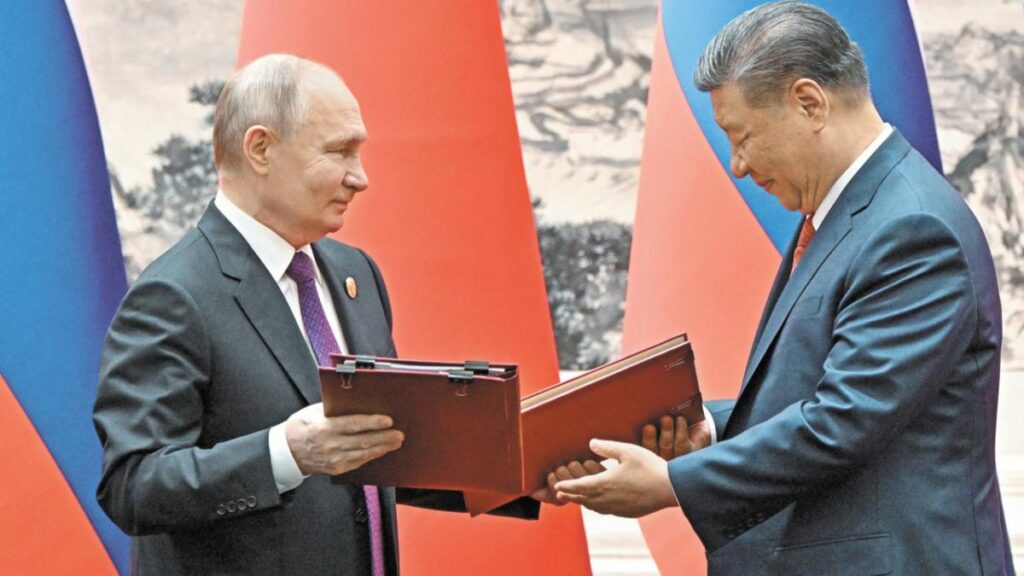Background on Key Players and Relevance
In an effort to circumvent Western sanctions, Russia has established a clandestine payment system known as “the China Route” for transactions with China. This initiative was spearheaded by major Russian banks to minimize their visibility to Western regulators and mitigate the risk of secondary sanctions. The system has been operational for some time without encountering significant issues.
Russia’s trade with China reached a record-breaking $245 billion in the previous year, despite payment problems and commissions up to 12%. This was due to Chinese banks’ reluctance to do business with Russia, fearing potential damage to their ties with the United States.
Political Significance and Recent Developments
The matter gained so much importance that Russian President Vladimir Putin and Chinese President Xi Jinping discussed it during Putin’s visit to China in May 2024, aiming to solidify the “boundless” partnership between both nations.
Xi’s participation in Russia’s Victory Day parade on May 9 adds relevance to the flourishing trade with Russia and other non-Western countries amidst China’s ongoing trade war with the United States.
“I don’t rule out that Chinese partners may stop fearing secondary sanctions,” said Alexander Shojin, head of the influential RSPP business lobby group involved in negotiations with China.
How the Secret System Works
The new system was created by sanctioned banks and involves a network of intermediaries registered in countries considered friendly to Russia. The system has been functioning smoothly without major setbacks.
Each bank manages multiple verified payment agents, some handling export payments and others import payments. All payments are centralized and settled by the bank, with all parties involved receiving their funds.
Banks settle trade in both directions, according to market sources who spoke anonymously due to the sensitive nature of the topic.
Banks provide payment settlement guarantees and financial instruments to protect against potential non-payment by a payment agent or counterparty. The system does not use the SWIFT messaging system or Western bank accounts.
“We had to structure financial flows through friendly jurisdictions to avoid blocking these payments,” said a market source, emphasizing that the compensation method has become the cheapest way to settle trade with China.
Sources declined to name the banks involved, citing a desire to avoid further attention due to sanctions. However, they confirmed that all participating banks are among Russia’s top 20.
Historical Context and Impact
In 2022, China economically supported Russia amid unprecedented Western sanctions following its military actions in Ukraine, supplying consumer goods that replaced those offered by Western companies.
China continued importing oil and other natural resources from Russia despite Western pressure. However, consumer goods trade nearly stalled last year due to secondary sanction risks.
Key Questions and Answers
- What is the “China Route” system? It’s a secret payment system created by major Russian banks to conduct transactions with China while minimizing visibility to Western regulators and mitigating secondary sanctions risks.
- Who are the key players involved? The system was created by sanctioned Russian banks and involves intermediaries registered in countries considered friendly to Russia. All participating banks are among the top 20 in Russia.
- How does this system work? Each bank manages multiple verified payment agents handling export and import payments. All payments are centralized, settled by the bank, and distributed to involved parties.
- Why was this system necessary? Due to reluctance from Western and Chinese banks to do business with Russia, fearing potential damage to their ties with the United States, this system was established to circumvent Western sanctions.
- What is the historical context? In 2022, China economically supported Russia amid Western sanctions following its military actions in Ukraine. Despite this support, consumer goods trade nearly stalled last year due to secondary sanction risks.






